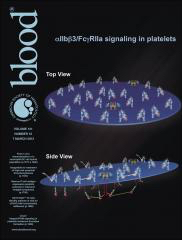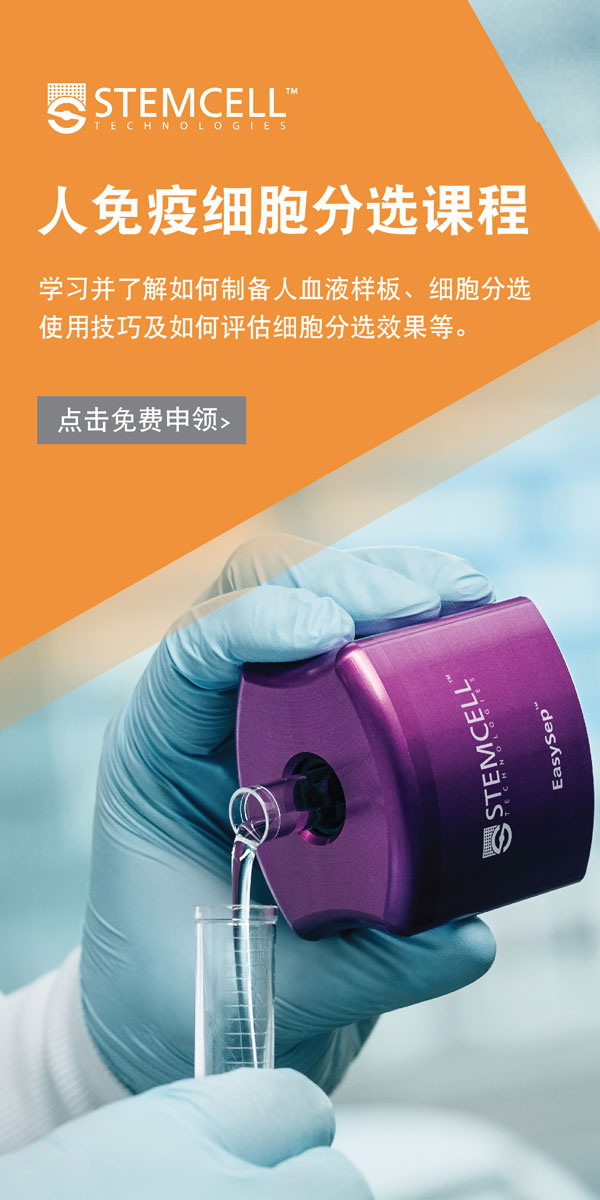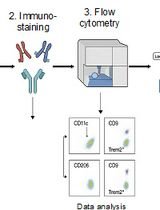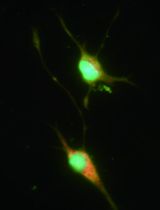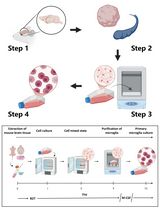- EN - English
- CN - 中文
Culture of Megakaryocytes from Human Peripheral Blood Mononuclear Cells
人外周血单核细胞中巨核细胞的培养
发布: 2015年11月05日第5卷第21期 DOI: 10.21769/BioProtoc.1639 浏览次数: 26631
评审: Ralph BottcherSalma HasanAnonymous reviewer(s)
Abstract
Megakaryocytes are the precursor cells of platelets and are bona fide resident cells in the bone marrow but extremely low in numbers (~1% of total nucleated cells). Upon terminal differentiation, megakaryocytes increase their size, become polyploid and develop a demarcation membrane system. Mature megakaryocytes form proplatelets, which are cytoplasmic extensions that protrude through the endothelial cell layer of venous sinusoids within the bone marrow, entering into the blood circulation and, subsequently, releasing platelets. Despite limited in numbers, megakaryocytes have been successfully isolated from bone marrow (Tolhurst et al., 2012), adult peripheral blood (Mazur et al., 1990; Thornton et al., 1999), cord blood (Sun et al., 2004) and also from embryonic stem cells (Pick et al., 2013; Eto et al., 2002). These procedures rely on immunostaining using antibodies against megakaryocyte surface markers (i.e. CD41 or CD42b) to isolate an enriched population of megakaryocytes. Here, we describe a culture method wherein megakaryocytes can be grown and differentiated in vitro from human peripheral blood mononuclear cells (PBMCs) directly without the need of initial isolation of CD34+ cells. This method is based on a previously published culture method of human erythroid progenitor cells from PBMCs (Borg et al., 2010; Leberbauer et al., 2005). Although the purity of megakaryocytes is not 100% in this culture method, an enriched fraction of megakaryocytes can be further isolated using BSA gradient or cell-sorting techniques. In addition, our method offers the possibility to freeze the cultures after minimal expansion of yet undifferentiated megakaryocytes, which will yield equal megakaryocyte cultures after thawing when compared to fresh uninterrupted cultures. As this has been proven difficult with CD34+ sorted pluripotent cells, it allows managing samples and to perform downstream analysis when human material is not always available.
Materials and Reagents
Note: *These materials/reagents can be replaced by similar alternatives.
- NUNC tubes-50 ml (Thermo Fisher Scientific, catalog number: 339651 )*
- Whole blood (aseptic) in anticoagulant (~ 50 ml volume)
- Phosphate buffer saline (PBS) (pH 7.4)
- Trisodium Citrate Dihydrate (TNC) buffer (38 gram/L demi water, pH 7.0) (Sigma-Aldrich, catalog number: S1804 )
- Percoll® (GE Healthcare, catalog number: 17-0891-09 )
- StemSpanTM SFEM (500 ml) (STEMCELL technologies, catalog number: 09650 )
- Lipids Cholesterol Rich from adult bovine serum (Sigma-Aldrich, catalog number: L4646 )*
- Penicillin-Streptomycin (Sigma-Aldrich, catalog number: P4333 )*
- Recombinant human stem cell factor (SCF) (Life technologies, catalog number: PHC2115 )*
Note: Currently, it is “Thermo Fisher Scientific, GibcoTM, catalog number: PHC2115”. - Recombinant human thrombopoietin (TPO) (Life technologies, catalog number: PHC9514 )*
Note: Currently, it is “Thermo Fisher Scientific, GibcoTM, catalog number: PHC9514”. - Recombinant human Erythropoietin (EPO) (R&D Systems, catalog number: 287-TC-500 )*
- (Optional) Recombinant Human Flt3-Ligand (FLT3-L) (Peprotech, catalog number: 30019 )*
- Culture media (see Recipes)
- Basis medium (see Recipes)
- Phase I medium (expansion) (see Recipes)
- Phase II medium (commitment) (see Recipes)
- Phase III medium (differentiation) (see Recipes)
- Basis medium (see Recipes)
Equipment
Note: *Indicated equipment can be replaced by similar alternatives.
- Centrifuge-Rotanta 460 (Hettich, catalog number: 5650 )*
- CASY Cell counter (Roche, model: CASY TTC )*
Procedure
文章信息
版权信息
© 2015 The Authors; exclusive licensee Bio-protocol LLC.
如何引用
Salunkhe, V., Papadopoulos, P. and Gutiérrez, L. (2015). Culture of Megakaryocytes from Human Peripheral Blood Mononuclear Cells. Bio-protocol 5(21): e1639. DOI: 10.21769/BioProtoc.1639.
分类
细胞生物学 > 细胞分离和培养 > 细胞分化
细胞生物学 > 细胞分离和培养 > 细胞分离
您对这篇实验方法有问题吗?
在此处发布您的问题,我们将邀请本文作者来回答。同时,我们会将您的问题发布到Bio-protocol Exchange,以便寻求社区成员的帮助。
Share
Bluesky
X
Copy link




